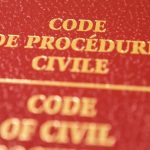SETTLING AN ESTATE
Settling an estate is not without its challenges as a liquidator must abide by his legal duties to avoid triggering his personal liability for the debts of the deceased. Thus, a liquidator must show great patience and diligence in his administration of the estate.
The liquidator is usually appointed by a testamentary disposition. However, in the absence of a will, the office of liquidator devolves of right to the heirs. In turn, pursuant to article 785 of the Civil Code of Québec (hereinafter the “C.c.Q.”), the heirs may designate a liquidator by way of majority vote.
The following is a succinct rundown of a liquidator’s responsibilities regarding the settlement of the estate entrusted to him.
- Contacting and identifying all possible heirs
The heirs are either named in the will or, in its absence, determinable according to the legal devolution of successions (article 653 and ff. C.c.Q.). Where there is no heir, the estate falls to the State/Government.
All heirs and creditors may receive a copy of the will. At the very least, an heir may simply receive a copy of the passage in the will indicating his status as an heir.
For all other individuals wishing to gain access to the will, they may directly inquire with the drafting notary.
Pursuant to articles 484 and 485 of the Code of Civil Procedure (hereinafter the “C.c.p.”), they may be entitled to receive a copy of the will. For more information, please read our blog on new entries on the Code of Civil Procedure by clicking here.
- Notifying others of the deceased’s passing
It is important to notify others of the deceased’s passing in order to cease all activities in the deceased’s accounts, namely:
a) Service providers (e.g. cellphone, internet and satellite television provider, credit card companies, etc.); and
b) Government bodies (e.g. the Régie des rentes du Québec, the Régie de l’assurance maladie du Québec, etc.).
- Determining the content of the estate
A liquidator is bound to make an inventory of the deceased’s estate. The inventory must include a faithful and exact enumeration of all the property found within.
Pursuant to article 1326 C.c.Q., an inventory contains the following:
a) Description of the immovable and movables with indication of their value;
– The deceased’s personal effects valued less than $100 are not required to be taken into account;
b) Description of the currency in cash and other securities;
c) List of valuable documents;
d) Statement of liabilities as of the date of the deceased’s passing; and
e) Recapitulation of assets and liabilities.
The inventory is made either by notarial act en minute or by a private writing before two (2) witnesses (article 1327 C.c.Q.).
A copy of the inventory must be furnished to the beneficiaries of the administration and every other person known to have an interest (article 1330 C.c.Q.).
Moreover, the closure of the inventory must be published in the register of personal and movable real rights (hereinafter the “RDPRM”) and in a newspaper circulated in the locality where the deceased had his last known address (article 795 C.c.Q.). The closure is merely an indication that an inventory has been prepared and not a listing of the contents found within.
Pursuant to article 799 C.c.Q., the liquidator may be exempt from making an inventory should all the heirs and successors provide their consent.
- Recovering claims
Anything owed to the deceased at the time of his passing must be recovered by the liquidator and deposited in the estate account since the collected assets benefit the estate as a whole.
Most notably, these claims are narrowed down to: held-over work-related earnings, private pension plan benefits, and life insurance claims.
- Paying the estate’s debts and the legacies by particular title
In his administration of the estate, the liquidator must realize the property of the succession to the extent necessary to pay the debts and legacies by particular title (article 804 C.c.Q.). To that effect, he may alienate movable property that is perishable, likely to depreciate rapidly or expensive to maintain. The other property of the estate may also be alienated upon obtaining the heirs’ consent, or failing which, a court authorization.
a) When the estate is manifestly solvent
The liquidator pays the known creditors and legatees by particular title on a first-come-first-served basis (article 808 par. 1 C.c.Q.). Note that the compensatory allowance to the surviving spouse or any other debt resulting from the liquidation of the patrimonial rights of the married or civil union spouses is treated in the same manner as any other debt of the estate (article 809 C.c.Q.).
Consequently, there is no order to respect regarding the payment when the estate is manifestly solvent.
However, an exception does exist concerning ordinary public utility bills and outstanding debts which must be paid when they become due (article 808 par. 2 C.c.Q.).
Also, advances may be paid to the creditors of support and to the heirs and legatees by particular title of sums of money, but said advances are deducted from their shares (article 807 C.c.Q.).
b) When the estate is manifestly insufficient
The situation is vastly different when the estate’s debts outweigh its assets. In this scenario, pursuant to article 811 C.c.Q., the liquidator must:
i) Draw up a full statement of the estate which must be notified to all interested persons;
ii) Obtain a court homologation of a payment proposal containing a provision for a reserve for the payment of any future judgment; and
iii) Alienate property bequeathed as legacies by particular title or reduce such legacies if the other property in the estate is in sufficient to pay all the debts (article 813 C.c.Q.).
Also, the liquidator may elect not to pay the debts of the succession or the legacies by particular title until 60 days following the registration of the notice of closure of the inventory (article 810 par. 1 C.c.Q.).
Article 812 C.c.Q. outlines the order in which the parties must be paid in accordance with the payment proposal (article 811 C.c.Q.):
i) The preferred or hypothecary creditors according to their rank;
ii) The other creditors, except for their claims with regard to their support;
– If the liquidator is unable to repay them fully, he pays them pro rata to their claims;
iii) Should any property remain after paying the creditors outlined above, the liquidator pays the creditors of supports in pro rata to their claims if he is unable to repay them fully; and
iv) The legatees by particular title.
– Reminder: Property bequeathed by particular title may be alienated or reduced to pay the parties ranked above the legatees by particular title.
- Insuring his performance
Pursuant to article 790 C.c.Q., the liquidator must either take out insurance or furnish other security guaranteeing the performance of his obligations in the following cases:
a) If stated by the deceased in his will;
b) By demand of the majority of the heirs; or
c) By court order upon the application of any interested person establishing the need for such a measure.
- Rendering an account
a) Annual account
If the liquidation takes longer than a year, the liquidator must render and annual account of management to the heirs, creditors, and legatees by particular title who have not been paid (article 806 C.c.Q.).
This account must be sufficiently detailed to allow the verification of its accuracy (article 1352 par. 1 C.c.Q.).
b) Final account
Upon termination of the liquidator’s administration, he must render a final account of to the beneficiaries of the estate (article 1363 C.c.Q.).
This account must also be sufficiently detailed to allow the verification of its accuracy. Once the account is accepted by the beneficiaries, it is effectively closed.
The object of this account is to determine the net assets or the deficit of the succession.
As such, pursuant to article 820 C.c.Q., the final account must indicate:
i) The unpaid debts and legacies;
ii) The debts guaranteed by security or assumed by heirs or legatees by particular title;
iii) The debts whose payment is settled otherwise and a specification of the mode of payment for each; and
iv) The reserves needed for the satisfaction of future judgments.
Once the final account has been accepted, the liquidator is discharged of his administration and delivers the property to the heirs.
Lastly, the closure of the account must be published in the RDPRM (article 822 par. 2 C.c.Q.).
- Delivering the property
Prior to distributing the deceased’s property, the liquidator must acquire the following two (2) certificates:
i) A certificate from Revenu Québec authorizing said distribution; and
– A Notice Before Distribution of the Property of a Succession must be filed in order to obtain this certificate.
ii) A clearance certificate from the Canada Revenue Agency.
– The liquidator must fill out Form TX19.
It must be noted that any distribution made before receiving these certificates may trigger the liquidator’s personal liability.
If the liquidator must deliver a share to a minor worth in excess of $25,000.00, he must fill out a “Declaration of remittance of property in favour of a minor child” form and send it to the Public Curator (Curateur public).
Regarding the deceased’s car or immovable property, there are additional steps a liquidator must take to ensure they are properly transferred:
a) The deceased’s car
The liquidator must fill the “Declaration of Transfer of Ownership Following Death” form prepared by the Société de l’assurance automobile du Québec.
b) The deceased’s immovable
The liquidator must sign a “Declaration of Transfer” which is prepared by a notary.
Also, the liquidator must hand over all that he has received in the performance of his duties, even if what he has received was not due to the heirs. This includes, but is not limited to, any personal profit or benefit he has realized using unauthorized information obtained throughout his administration (article 1366 par. 1 C.c.Q.).
The liquidator may also deduct the sums owed to him by the heirs for his administration from the sums he is required to remit (article 1369 par. 1 C.c.Q.).
- Filing the deceased’s tax returns
The liquidator is not only responsible for filing the deceased’s provincial and federal taxes for the years prior to his death if left unaccomplished, but also the tax returns for his year of death.
The deadline for filing said returns and paying any taxes vary depending on the date of death and if the deceased operated a business.
For more information on fiscal matters and estates, please consult the Revenu Québec and Canada Revenue Agency websites.
- Must all these steps be followed?
The steps outlined above can be skipped if the heirs unanimously decide to proceed in that manner.
However, be warned that they risk being held personally liable for the debts of the succession while keeping the liquidator off the hook.
If you are looking for a law firm with reasonable rates, quick and efficient turnaround time for your files and who provides personalized and effective follow-ups, call Schneider Attorneys at (514) 439-1322 ext. 112 or email us at client@schneiderlegal.com
The above noted text should not be construed as providing legal advice or a statement of your claim. The process highlighted above are merely parameters and barometers and do not constitute any warranties and guaranties with regards to your file at hand. We strongly recommend that you seek legal advice with a licensed attorney from the Barreau du Quebec or a notary at the Chambre des Notaires. Each case must be seen and analysed on its merits as the legal process may be complex and cumbersome.








